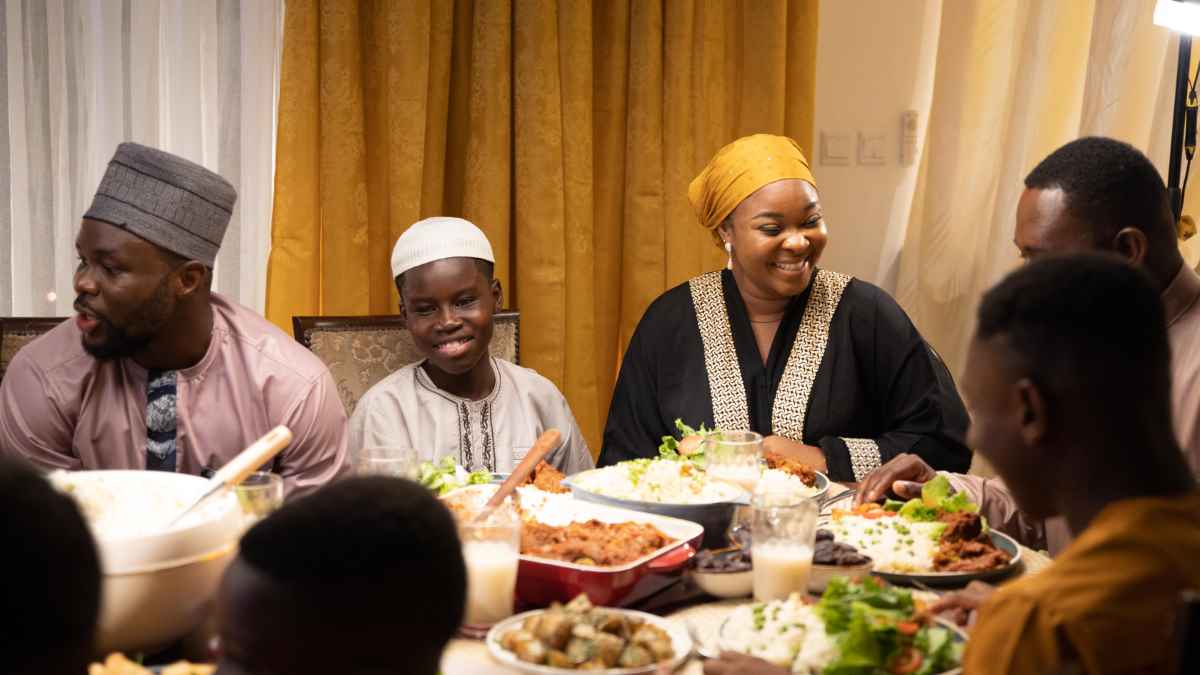Multinationals like Nestlé are championing affordable and good nutrition for families through its brands while ensuring the sustainable sourcing of raw materials
ACCRA, Ghana, April 7, 2024/APO Group/ —
As we commemorate World Health Day 2024 themed ‘My health, my right,’ the focus turns to the critical importance of good food and nutrition, particularly in regions like Central and West Africa.
Nutrition is the foundation of human health, influencing every aspect of physical, cognitive, and emotional well-being. In these regions, where socio-economic gaps, environmental challenges, and diverse cultural norms converge, the importance of good nutrition becomes even more pronounced.
That is why multinationals like Nestlé are championing affordable and good nutrition for families through its brands while ensuring the sustainable sourcing of raw materials such as coffee, cocoa, soya among other ingredients in its supply chain.
“Nestlé reaffirms its commitment to promoting quality and affordable nutrition, particularly in Central and West Africa. We believe that access to balanced diets, rich in essential nutrients, is vital for maintaining optimal health and well-being. Together, we strive for a future where everyone has access to nutritious diets, ensuring not only physical health but also fostering local communities and prosperous societies,” says Mauricio Alarcón, CEO Nestlé Central and West Africa.
Foundation of Health
In Central and West Africa, numerous health challenges persist, ranging from enduring malnutrition to the rising incidence of diet-related non-communicable diseases. These nutritional deficiencies not only hinder physical growth and development but also weaken immune function, cognitive abilities, and overall disease resilience.
Essential nutrients found in a balanced diet, including vitamins, minerals, proteins, carbohydrates, and fats, are the building blocks of health. Ensuring adequate nutrition during critical life stages, such as pregnancy, infancy, and early childhood, is vital for optimal growth, development, and long-term health outcomes.
Preventing Non-Communicable Diseases
In recent years, Africa has seen an increase in the rate of non-communicable diseases such as diabetes, cardiovascular disease, high blood pressure, and obesity. This rise mirrors global trends but is amplified by unique regional dynamics. While infectious diseases remain significant, lifestyle factors, like diet and physical activity, drive much of this burden.
A balanced diet is paramount in promoting overall health and preventing chronic diseases. A balanced diet encompasses a diverse range of nutrient-rich foods from all food groups, including fruits, vegetables, whole grains, lean proteins, and healthy fats. This dietary approach not only supports physical well-being but also aids in weight management and reduces the risk of obesity and associated health issues.
Together, we strive for a future where everyone has access to nutritious diets, ensuring not only physical health but also fostering local communities and prosperous societies
Access to a diverse and balanced diet, rich in essential nutrients is not only a basic human necessity but also a prerequisite for achieving the UN Sustainable Development Goals (SDGs) related to health, well-being, and poverty alleviation (https://apo-opa.co/4alNe79).
Empowering Communities Through Education
Empowering communities through education on nutrition is a powerful tool in the fight against malnutrition. Providing knowledge about healthy eating habits and balanced diets through initiatives in schools, community centers, and healthcare facilities can help dispel myths and empower people to make informed dietary choices.
Fortified Essentials for Balanced Nutrition
Some companies, like Nestlé, recognizes the importance of nutrition and quality in their product offerings. For instance, Nestlé’s R&D center in Côte d’Ivoire (https://apo-opa.co/49tbpiL) employs scientists and food technologists dedicated to developing affordable nutrition solutions for the region. They consider local dietary preferences and nutritional needs, integrating regionally sourced cereals and plant protein sources into formulations. These products are fortified with essential micronutrients like iron, iodine, zinc, and other vitamins and minerals ensuring optimal nutritional value.
Additionally, these experts have access to Nestlé’s global network of experts, advanced analytical equipment, labs, and pilot plants across all company R&D locations.
Products like Maggi (https://apo-opa.co/3VJdeop), widely recognized across the continent, are fortified with essential micronutrients such as iron and iodine, meeting local preferences while boosting nutritional intake. Likewise, Cerelac (https://apo-opa.co/49wX6JQ), enriched with iron, and Nido (https://apo-opa.co/3VJd8x3), fortified with calcium, provide vital nutrients essential for children’s growth and development.
In Nigeria, the company recently introduced Nido Milk & Soya (https://apo-opa.co/3VQ3PeS), a product that integrates locally sourced soybeans. This initiative offers a budget-friendly option for nutritious consumption, while providing healthy nutrition among consumers.
Harnessing the Power of Collaboration
The path to improved nutrition in Central and West Africa necessitates collaborative efforts across sectors and stakeholders. By partnering with governments, civil society organizations, academia, and the private sector, we can combine resources, expertise, and innovations to drive meaningful change in the region.
Nestlé reaffirms its commitment to being a force for good by tackling the root causes of malnutrition, advocating for food security policies, and empowering individuals and communities with knowledge and resources for informed dietary choices. This in the long term creates a future where everyone experiences the highest standard of health and well-being.
Distributed by APO Group on behalf of Nestlé.


 Business3 days ago
Business3 days ago
 Business3 days ago
Business3 days ago
 Business3 days ago
Business3 days ago
 Business3 days ago
Business3 days ago
 Business3 days ago
Business3 days ago
 Business3 days ago
Business3 days ago
 Business2 days ago
Business2 days ago
 Business3 days ago
Business3 days ago














